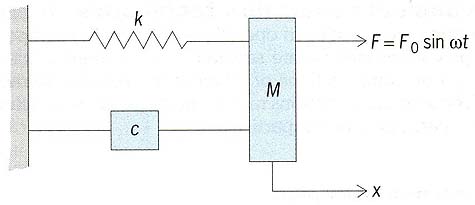AMAZON multi-meters discounts AMAZON oscilloscope discounts
Mechanical vibration: the continuing motion, repetitive and often periodic, of a solid or liquid body within certain spatial limits. Vibration occurs frequently in a variety of natural phenomena such as the tidal motion of the oceans, in rotating and stationary machinery, in structures as varied in nature as buildings and ships, in vehicles, and in combinations of these various elements in larger systems. The sources of vibration and the types of vibratory motion and their propagation are subjects that are complicated and depend a great deal on the particular characteristics of the systems being examined. Further, there is strong coupling between the notions of mechanical vibration and the propagation of vibration and acoustic signals through both the ground and the air so as to create possible sources of discomfort, annoyance, and even physical damage to people and structures adjacent to a source of vibration.
AMAZON multi-meters discounts AMAZON oscilloscope discounts
Mass-spring-damper system
Although vibrational phenomena are complex, some basic principles can be recognized in a very simple linear model of a mass-spring-damper system (see figure below). Such a system contains a mass M, a spring with spring constant k that serves to restore the mass to a neutral position, and a damping element which opposes the motion of the vibratory response with a force proportional to the velocity of the system, the constant of proportionality being the damping constant c. This damping force is dissipative in nature, and without its presence a response of this mass-spring system would be completely periodic.

Above: Vibrating linear system (mass-spring-damper)
with one degree of freedom.
Effect of vibrations
The most serious effect of vibration, especially in the case of machinery,
is that sufficiently high alternating stresses can produce fatigue failure
in machine and structural parts. Less serious effects include increased
wear of parts, general malfunctioning of apparatus, and the propagation
of vibration through foundations and buildings to locations where the
vibration of its acoustic realization is intolerable either for human
comfort or for the successful operation of sensitive measuring equipment.